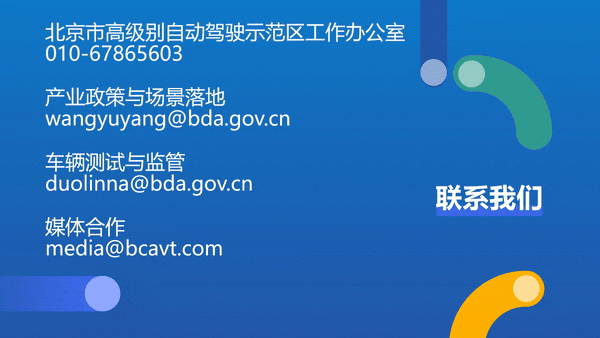
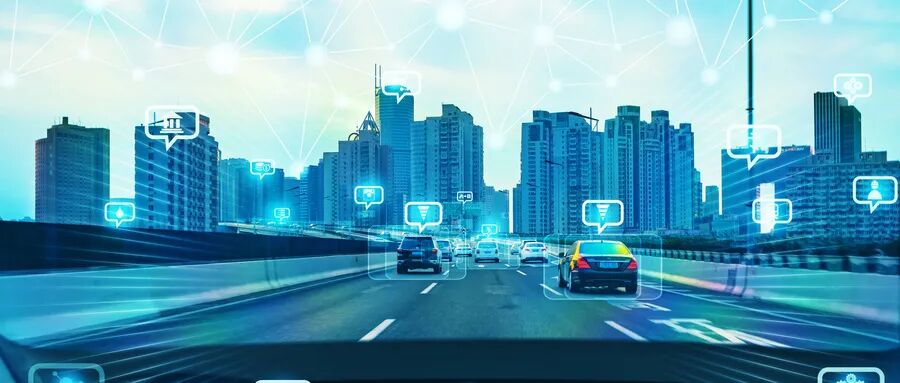 V2X technology, as an important component of intelligent transportation systems, is gradually coming into the public eye. V2X technology can effectively alleviate traffic pressure and improve road efficiency through methods such as optimizing signal control, guiding vehicle speed, and providing intelligent navigation.
V2X technology, as an important component of intelligent transportation systems, is gradually coming into the public eye. V2X technology can effectively alleviate traffic pressure and improve road efficiency through methods such as optimizing signal control, guiding vehicle speed, and providing intelligent navigation.
Vehicle-to-Everything (V2X) technology, as an emerging intelligent transportation solution, provides new ideas and technical support for alleviating traffic congestion due to its advantages in real-time data collection, transmission, and processing. V2X technology can predict traffic flow on urban expressways and quickly alleviate traffic congestion. In practical traffic management, by optimizing vehicle speed and distance, V2X technology significantly enhances road efficiency and promotes the continuous development of intelligent transportation systems.
01
Introduction
As traffic volume continues to increase during peak hours, especially on important traffic arteries such as urban expressways, traffic congestion has become a common and serious problem. Congestion not only reduces efficiency but also leads to a series of negative effects such as air pollution and energy waste. V2X technology, as an important component of intelligent transportation systems, is gradually coming into the public eye. V2X technology can effectively alleviate traffic pressure and improve road efficiency through methods such as optimizing signal control, guiding vehicle speed, and providing intelligent navigation. Despite the enormous potential of V2X technology in traffic congestion management, how to fully exploit its technical advantages and develop reasonable application plans remains a pressing issue. Therefore, a deep exploration of the application of V2X technology in predicting and alleviating traffic congestion on expressways is not only of great significance for improving traffic conditions but also provides an important theoretical basis and practical guidance for the future development of intelligent transportation systems.
02
Overview of V2X Technology
2.1 Definition of V2X
Vehicle-to-Everything (V2X) is a network architecture based on communication technology that allows vehicles to exchange information with other vehicles, road infrastructure, pedestrians, and cloud platforms. V2X mainly includes Vehicle-to-Vehicle (V2V), Vehicle-to-Infrastructure (V2I), and Vehicle-to-Pedestrian (V2P) communications. Among these, V2V is direct communication between vehicles, enabling real-time exchange of information such as location, speed, and direction to avoid collisions and enhance driving safety; V2I is communication between vehicles and infrastructure, such as transmitting real-time traffic information through intelligent traffic signals and roadside perception units; V2P is communication between vehicles and pedestrians, mainly achieved through mobile terminal devices to ensure pedestrian safety and provide traffic guidance.
The composition of V2X systems is very complex, involving multiple levels and various technologies. As shown in Figure 1, the cloud-based V2X service platform serves as the core of the V2X system, providing powerful data storage, analysis, and processing capabilities through cloud computing technology. This platform can integrate data from different sources (such as vehicles, roadside systems, pedestrian devices, etc.) and perform intelligent analysis to support decision-making in traffic management. The introduction of Mobile Edge Computing (MEC) allows V2X to process real-time data more efficiently by deploying computing resources within road segments or areas, enabling data to be processed closer to the data source to reduce latency and improve response speed; the roadside system (RSS) is the infrastructure part of V2X, mainly including roadside units (RSU) and roadside perception units, which can collect information on road conditions, traffic flow, etc., and transmit it to vehicles or cloud platforms; intelligent vehicles (such as the On-Board Unit (OBU) and Mobile Data Center (MDC) in Figure 1) are the terminal devices of V2X, equipped with OBU and MDC. These devices connect with roadside systems and cloud platforms to obtain and process surrounding environmental data in real-time.
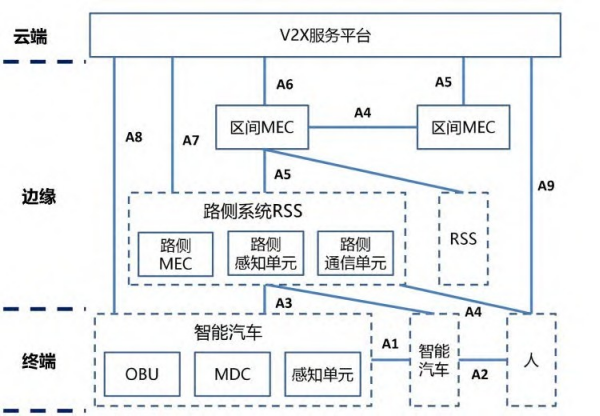
Figure 1: Composition of the V2X System
2.2 Key Technologies of V2X
Vehicle communication technology is one of the core technologies of V2X, mainly including V2V, V2I, and V2P. To achieve communication between vehicles and the surrounding environment, V2X technology mainly adopts two wireless communication standards: Dedicated Short Range Communication (DSRC) and Cellular Vehicle-to-Everything (C-V2X) (key indicators comparison is shown in Table 1). Among them, DSRC is based on the IEEE802.11p protocol, utilizing the 5.9GHz frequency band to achieve direct short-range communication for V2V and V2I; it has advantages such as low-latency communication of 20-100ms and independent deployment without relying on cellular networks, widely used abroad, but it has fatal flaws such as reliance on line-of-sight propagation, typically insufficient coverage of less than 500m, poor performance in high-density scenarios, and technological stagnation; C-V2X is based on 4G/5G cellular network communication, utilizing relay and beamforming technologies of cellular networks, supporting non-line-of-sight transmission, with a coverage radius of up to 2km, maintaining low latency (<3ms) and reliability in high-density traffic and complex environments. C-V2X technology integrates the advantages of cellular networks and radio base stations, widely used in autonomous driving and smart city road construction.
V2X systems generate massive amounts of data that need to be collected, processed, and analyzed in real-time. Big data and cloud computing technologies provide strong data storage and computing capabilities for V2X. Through cloud platforms, V2X can achieve global monitoring and prediction of road traffic conditions, analyze traffic flow, identify potential traffic congestion areas, and formulate effective traffic management strategies.
Table 1: Comparison of Key Indicators of DSRC and C-V2X
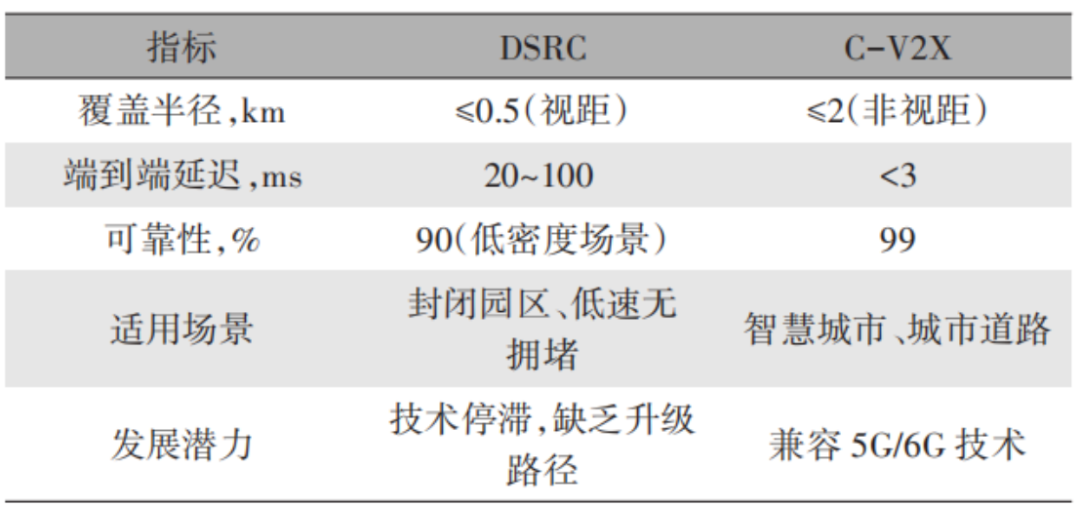
03
Analysis of Traffic Congestion Issues on Expressways
3.1 Causes of Traffic Congestion on Expressways
There are many reasons for traffic congestion on expressways, but excessive vehicle flow is the most direct cause. With the acceleration of urbanization, the rapid increase in population and the number of motor vehicles, during peak hours, multiple vehicles concentrated on the same road can easily create traffic bottlenecks, leading to severe congestion in localized areas. Inadequate traffic management and road design are also important causes of congestion, as many cities’ road planning has not fully considered actual traffic demand, resulting in traffic flow on expressways far exceeding designed capacity, leading to insufficient capacity during peak hours on some expressways.
In addition, some unreasonable road designs, unclear traffic signs, improper entrance and exit layouts, and non-standard driving behaviors can easily trigger bottleneck congestion, significantly reducing road efficiency and causing driving speeds to approach zero. Weather and unexpected factors are also common causes of traffic congestion on expressways; adverse weather conditions such as rain, snow, and fog can lead to slippery roads and reduced visibility, greatly increasing the likelihood of traffic accidents.
3.2 Existing Traffic Congestion Alleviation Measures and Their Limitations
As the problem of traffic congestion becomes increasingly severe, many cities have adopted various measures to alleviate it. Traditional traffic management types mainly include infrastructure, intelligent systems, and traffic diversion. The main contradictions and typical examples of these measures are shown in Table 2. While they may bring some improvements in the short term, they generally struggle to fundamentally solve the problem as urban development and traffic volume continue to increase. Although the application of intelligent systems introduces more advanced technical means, such as intelligent signal control, traffic flow monitoring, and scheduling, due to issues such as information transmission delays and inadequate hardware facilities, the system’s responsiveness and accuracy generally cannot meet the complex demands during peak hours, resulting in less than ideal alleviation of traffic congestion.
Table 2: Contradictions and Typical Examples of Different Measure Types
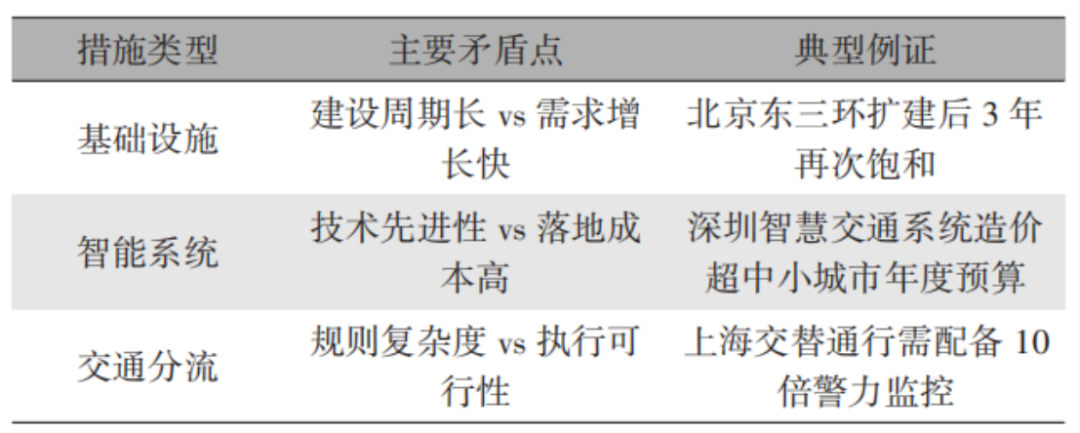
04
Application of V2X Technology in Predicting Traffic Congestion on Expressways
4.1 Real-time Monitoring and Analysis of Traffic Flow
V2X technology plays a crucial role in monitoring and analyzing traffic flow. Through real-time data exchange between vehicles and roadside units (RSU), the V2X system can continuously monitor traffic flow, vehicle speed, traffic signal status, and other information on the road, transmitting this data to cloud platforms or edge computing nodes for processing and analysis. Vehicles collect surrounding traffic information through on-board units, while roadside perception units are responsible for collecting environmental data such as road conditions and traffic signals. For example, in urban diversion areas, compared to a purely manually driven environment, the capacity of diversion areas can be doubled with a 100% penetration rate of V2X devices; in mixed traffic flow, as the penetration rate increases, it can also reduce the frequency of lane changes, decrease speed differences between vehicles in the system, and lower average vehicle delays, especially when the penetration rate of V2X devices exceeds 0.4, positively impacting traffic capacity.
V2X technology plays a key role in traffic flow prediction through big data analysis. A large amount of real-time data is aggregated and mined to achieve efficient prediction of traffic flow, identifying peak periods, traffic bottlenecks, and potential congestion areas to provide accurate decision support for traffic management departments. To further enhance prediction accuracy, the V2X system can also deploy early warning mechanisms for traffic congestion based on factors such as flow, speed, and traffic signals, enabling early intervention in traffic congestion to reduce its duration and impact.
4.2 Construction of Traffic Congestion Prediction Models
Machine learning algorithms, especially regression analysis, support vector machines (SVM), and random forests, have been widely applied in traffic flow prediction. By training on traffic flow, speed, and traffic signal data collected from the V2X system, machine learning models can learn the relationships between traffic flow and other environmental factors, thereby predicting future traffic conditions. For example, regression models can analyze the correlation between vehicle numbers and speed to predict traffic flow during peak periods. Deep learning technologies, particularly Long Short-Term Memory (LSTM) networks and Convolutional Neural Networks (CNN), have shown excellent performance in handling time-series data and complex data patterns. In the processing of V2X data, deep learning models can extract more refined and higher-level features from large amounts of traffic data, further improving prediction accuracy. For instance, LSTM models can predict short-term traffic flow trends by learning the temporal features of historical traffic data, while CNNs can effectively identify traffic patterns on different road segments, thus making predictions for various traffic situations.
To verify the effectiveness and feasibility of machine learning and deep learning models in traffic flow prediction, a set of real V2X datasets was tested; the dataset comes from the V2X system in Beijing, covering six months of highway traffic flow data, including hourly traffic volume, average speed, traffic signal status, and information under different weather conditions, time periods, and special events (such as traffic accidents or construction). Common evaluation metrics for assessing model effectiveness and feasibility include Mean Squared Error (MSE), Mean Absolute Error (MAE), and the Coefficient of Determination (R²). These metrics can objectively reflect the model’s prediction error, accuracy, and fitting ability.
The model evaluation first divides the V2X dataset into training and testing sets, where the training set is used for model training, and the testing set is used for model validation. The training set includes data from the past three months, while the testing set selects data from the remaining three months. The performance of the LSTM model, random forest model, and regression model on the testing set is shown in Table 3.
Table 3: Performance of Different Models on the Testing Set


Results show that the LSTM model performs best in terms of Mean Squared Error and Coefficient of Determination, indicating that it can provide higher prediction accuracy in traffic flow prediction and effectively capture temporal variation features in traffic data. Additionally, the LSTM model has a lower Mean Absolute Error (MAE), further proving its feasibility in practical applications. Compared to other models, LSTM shows stronger advantages in handling time-series data, better accommodating dynamic changes in traffic flow.
4.3 Improvement of Prediction Accuracy of Traffic Congestion by V2X Technology
The data collection and transmission mechanisms of the V2X system make real-time acquisition of traffic data possible. This real-time capability enhances the responsiveness of traffic predictions, allowing early warnings to be issued as congestion begins to emerge, reducing the worsening of traffic congestion due to prediction delays. To verify the effectiveness of V2X technology in traffic congestion prediction, a comparative analysis of prediction results based on V2X data and actual traffic conditions was conducted. The data source is the V2X monitoring system in Beijing, with predictions made for peak periods from May 10 to May 12, 2024, using an LSTM-based deep learning method. The results are shown in Table 4..
Table 4: Comparison of Prediction Results Based on V2X Data and Actual Traffic Conditions
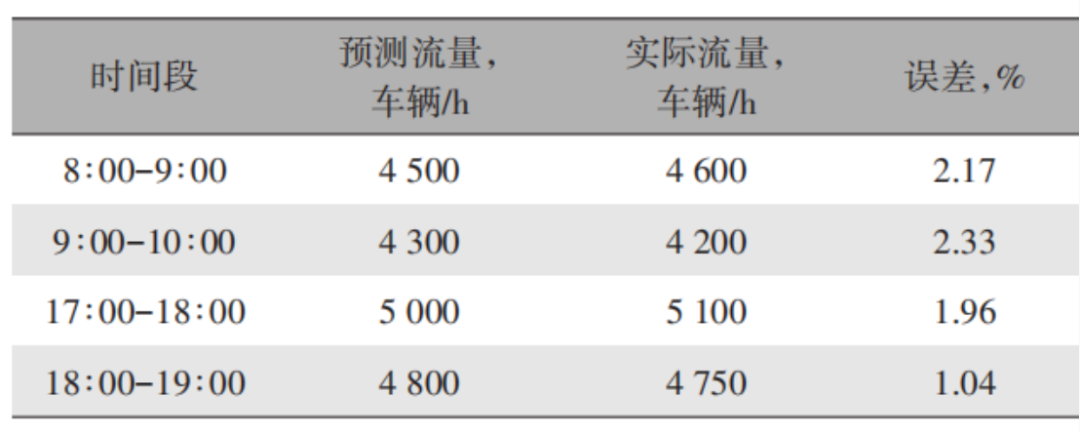
 Results show that the prediction results and actual traffic data have a small error, indicating that the application of V2X technology in traffic congestion prediction is effective, providing relatively accurate traffic flow predictions.
Results show that the prediction results and actual traffic data have a small error, indicating that the application of V2X technology in traffic congestion prediction is effective, providing relatively accurate traffic flow predictions.
05
Application of V2X Technology in Alleviating Traffic Congestion on Expressways
5.1 Intelligent Traffic Signal Control Systems
The application of V2X technology provides new optimization pathways for intelligent traffic signal control systems. The V2X system can obtain real-time information on traffic flow, vehicle speed, and road occupancy, allowing the signal light scheduling system to dynamically adjust signal light cycles based on this information. By coordinating signal control and traffic flow, V2X can achieve dynamic balance of traffic flow. Among them, roadside units are an important link in C-V2X, serving as a crucial connection for vehicle-to-road communication. In the main urban area of Beijing Yizhuang, over 300 roadside measurement units were built within an area of more than 60 km², resulting in a 16% reduction in average vehicle delay on four bidirectional main roads, a 28.48% decrease in average delay at intersections, a 30.3% reduction in vehicle queue length, and an 18.33% decrease in green light waste time. In the Xujiahui business district of Shanghai (5 km²), 30 C-V2X roadside measurement units were deployed (density of 6 units/km²), achieving a 60% penetration rate of OBUs, resulting in a 22% increase in traffic speed during peak hours, a reduction of 45 accidents per year, a cost saving of $6.75 million, a payback period of 1.5 years, and a net present value of $28.5 million, with traffic efficiency performance at different densities shown in Table 5.
Table 5: Benefits of Deployment Density

Results show that, with the increase in the deployment density of roadside measurement units (RSU), congestion time, average vehicle speed, and communication coverage have all improved, leading to smoother vehicle-to-vehicle communication. However, the cost of each roadside measurement unit can reach tens of thousands of yuan, and increasing deployment density means significantly higher investment and maintenance costs.
5.2 Optimization of Speed and Distance Control
Speed control is one of the important aspects of optimizing traffic flow with V2X technology. The V2X system can automatically adjust vehicle speeds based on changes in traffic flow ahead, avoiding traffic congestion caused by vehicles going too fast or too slow. Taking the Shanghai Ring Expressway as an example on May 10, 2024, traffic flow prediction was conducted with speed control and distance adjustment, dynamically adjusting the distance and speed between vehicles based on real-time monitoring of vehicle positions, speeds, and road conditions to enhance traffic smoothness. Specific results are shown in Table 6.
Table 6: Comparison of Traffic Smoothness Before and After V2X Technology Application
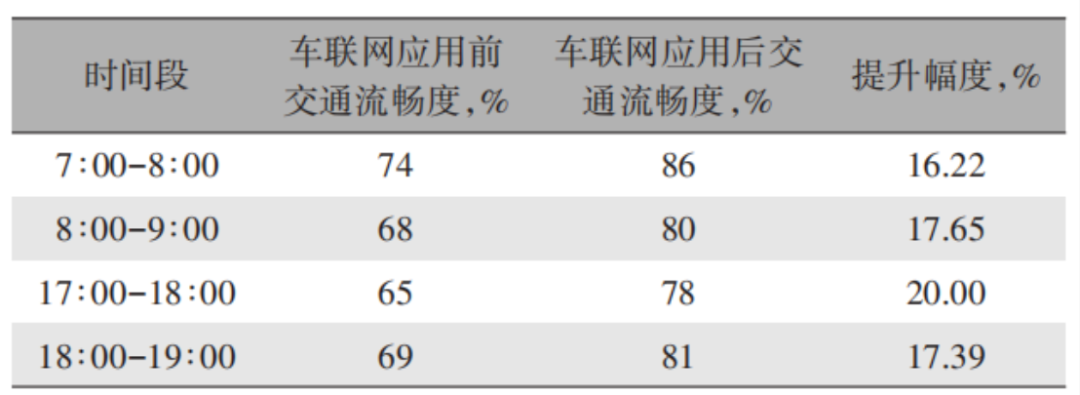
Results show that the application of V2X technology significantly improved traffic smoothness at all times, especially during peak hours, where optimization of speed and distance effectively alleviated traffic congestion and significantly increased road efficiency.
06
Conclusion
As an important component of intelligent transportation systems, V2X technology is gradually changing traditional traffic management models, significantly enhancing road efficiency and traffic safety through real-time data collection, processing, and application. As the operational pressure on urban expressway networks continues to increase, the in-depth application of V2X technology is bringing revolutionary breakthroughs to the field of smart transportation. This technology not only significantly improves the accuracy of road condition perception and traffic flow prediction but also endows traffic management systems with dynamic control capabilities and collaborative decision-making effectiveness. With the iterative upgrade and large-scale application of V2X technology, it is expected to further break the bottlenecks of traditional traffic management and promote urban traffic systems towards a more intelligent and connected future.
Author | Jiang Feihong
Source | Special Vehicles 2025 Issue 5








